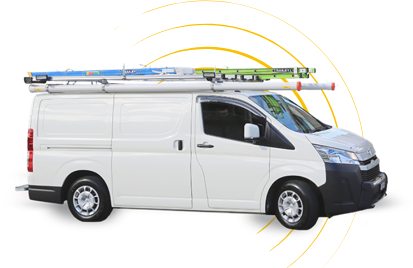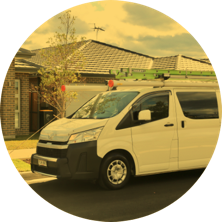OUR REVIEWS
What Our Customers Say
Emergency and Exit Lights Maintenance & Service
Are you putting your property at risk with inadequate emergency and exit lighting? In the case of an emergency, specially designed and positioned lighting can mean the difference between life and death. It can mean the difference between seeing an escape route and being trapped in a fatal situation.
Aside from these safety benefits, your building will run the risk of being defected if a building inspector deems that your emergency exit lighting does not comply with the Australian Standard as outlined in AS 2293. Therefore, it is essential to get an expert on site to verify that the emergency exit lights in your building are up to scratch.
Do I need emergency exit lights?
All buildings built after 1st of July 1994 that are classified as Class 6 with more than 100m² must have emergency exit lightings. Class 6 buildings are restaurants, dining rooms, cafes, shops, bars and milk bars. All class 6 buildings must have at least one exit sign in the building according to the regulations.
How often do I need to test the emergency exit lights?
As part of the Australian Standards, your emergency exit lighting and signs must be illuminated for at least 90 minutes after a complete power outage. Because emergency exit lights and signs are powered by an internal battery, it must be able to separately lit in order to guide people in the building to safely evacuate. Emergency exit lights and signs must be tested every 6 months. An electrical technician from Gordon’s Powers will perform a 90-minute power drop test. If it has passed the test, your building will be certified.
Are You Breaking The Law?
Did you know that in some property scenarios, emergency and exit lighting is required by law?
If you are unsure about what your property requires, one of our friendly electricians can provide you with some expert advice, so you can be sure you’ll avoid expensive fines, crippling liability and causing harm to anyone.
We have a wide range of exit lighting that complies with the rules and regulations in NSW. Just ask our experts for more information. We are fully qualified and trained to know where the best places to position the emergency exits and lighting in your building so that visitors can safely evacuate when there is an emergency.
Gordon’s Powers’ Qualified Electricians Will Install Emergency Exits According to Regulations
As part of the Australian rules and regulations, all building exit signs and emergency exit lights must comply with the Australian Standard AS2293. Gordon’s Powers have certified electricians that knows exactly this and will be able to guide you to what needs to be done with your emergency exits in order to get your building approved.
E4.2 Emergency lighting requirements
An emergency lighting system must be installed –
1) in every fire-isolated stairway, fire-isolated ramp or fire-isolated passageway; and
2) in every storey of a Class 5, 6, 7, 8 or 9 building where the storey has a floor area more than 300 m2 –
3) in every passageway, corridor, hallway, or the like, that is part of the path of travel to an exit; and
4) in any room having a floor area more than 100 m2 that does not open to a corridor or space that has emergency lighting or to a road or open space; and
iii. in any room having a floor area more than 300 m2; and
1) in every passageway, corridor, hallway, or the like, having a length of more than 6 m from the entrance doorway of any sole-occupancy unit in a Class 2 or 3 building or Class 4 part of a building to the nearest doorway opening directly to –
2) a fire-isolated stairway, fire-isolated ramp or fire-isolated passageway; or
3) an external stairway serving instead of a fire-isolated stairway under D1.8; or
iii. an external balcony leading to a fire-isolated stairway, fire-isolated ramp or fire-isolated passageway; or
1) a road or open space; and
2) in every required non fire-isolated stairway; and
3) in a sole-occupancy unit in a Class 5, 6 or 9 building if –
4) the floor area of the unit is more than 300 m2; and
5) an exit from the unit does not open to a road or open space or to an external stairway, passageway, balcony or ramp, leading directly to a road or open space; and
6) in every room or space to which there is public access in every storey in a Class 6 or 9b building if?
7) the floor area in that storey is more than 300 m2; or
8) any point on the floor of that storey is more than 20 m from the nearest doorway leading directly to a stairway, ramp, passageway, road or open space; or
iii. egress from that storey involves a vertical rise within the building of more than 1.5 m, or any vertical rise if the storey concerned does not admit sufficient light; or
1) the storey provides a path of travel from any other storey required by (i), (ii) or (iii) to have emergency lighting; and
2) in a Class 9a health-care building –
3) in every passageway, corridor, hallway, or the like, serving a treatment area or a ward area; and
4) in every room having a floor area of more than 120 m2 in a patient care area; and
5) in every Class 9c aged care building excluding within sole-occupancy units; and
6) in every required fire control centre.
In addition, the BCA also states the following requirements for Exit signs;
E4.5 Exit signs
An exit sign must be clearly visible to persons approaching the exit, and must be installed on, above or adjacent to each –
1) door providing direct egress from a storey to –
2) an enclosed stairway, passageway or ramp serving as a required exit; and
3) an external stairway, passageway or ramp serving as a required exit; and
iii. an external access balcony leading to a required exit; and
1) door from an enclosed stairway, passageway or ramp at every level of discharge to a road or open space; and
2) horizontal exit; and
d. door serving as, or forming part of, a required exit in a storey required to be provided with emergency lighting in accordance with E4.2.
For a greater peace of mind, contact Gordon’s Powers today to get our qualified electricians on site to inspect/install your emergency exit lights today!











